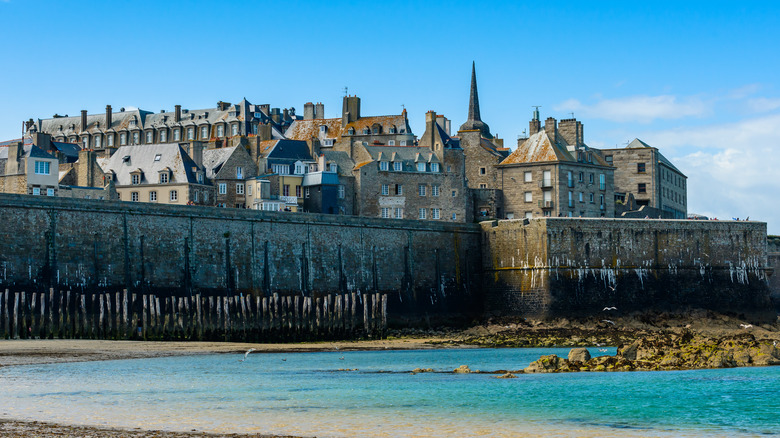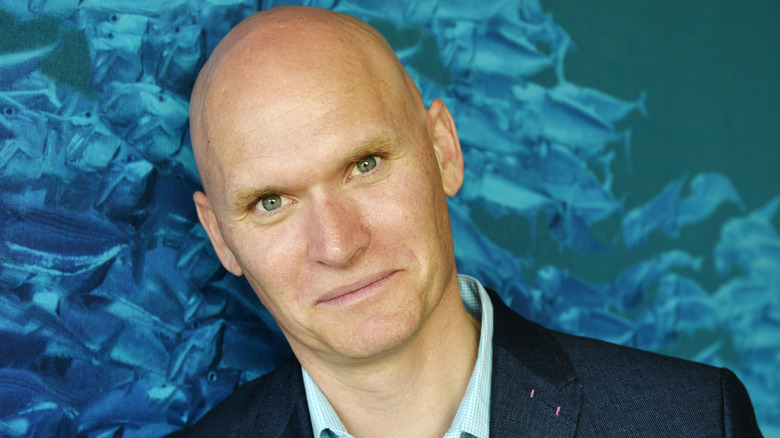All The Light We Cannot See - What We Know So Far
Netflix announced that it has begun production on an exciting new project based on the best-selling novel "All the Light We Cannot See" by Anthony Doerr, per The Hollywood Reporter. The streaming company will adapt the book into a limited series under the supervision of producer and director Shawn Levy.
"All the Light We Cannot See" was a surprise hit when released in 2014 and spent months on The New York Times bestseller list. The book, that's story revolves around the connection formed between a blind French teenager and a German soldier during World War 2, went on to win multiple prestigious fiction awards, including the Pulitzer Prize. Levy's production company, 21 Laps, which has previously participated in the creation of Netflix hits such as "Stranger Things" and "Shadow and Bone," will helm the project.
While Netflix's "All the Light We Cannot See" is still in the very early stages of production, the announcement did reveal some crucial details about who could end up playing the lead, as well as some details about how the limited series will be structured. Here is everything that fans need to know about "All the Light We Cannot See."
When is the release date for All the Light We Cannot See?
As a newly announced project, neither Netflix nor Shawn Levy's production company, 21 Laps, have hinted at a possible release date for "All the Light We Cannot See." However, fans eager to see the adaptation of the acclaimed novel can make a few educated guesses as to when the project might arrive.
When "All the Light We Cannot See" was announced, Netflix revealed that it had opened a worldwide casting call to fill the lead role, even providing an email address for prospective actresses to respond to, per TheWrap. While that search is undoubtedly exciting, it does indicate what an early stage the project remains at.
Taking all of that into consideration, the earliest that fans can reasonably expect to see "All the Light We Cannot See" premiere on Netflix would likely be in the latter half of 2022. However, with a worldwide casting search still underway, there is a better chance that Netflix will push the release to 2023.
Who is in the cast of All The Light We Cannot See?
As "All the Light We Cannot See" remains in a very early production stage, no actors or actresses have yet been announced. However, thanks to the international success of the book on which it is based, fans have a good idea of some of the critical roles still to be cast.
Perhaps the two most essential parts in "All the Light We Cannot See" are the young people at the story's center, Marie-Laure LeBlanc and Werner Pfennig. One of the crucial aspects of Marie-Laure LeBlanc's story is that she is blind, and as a result, Netflix has announced an international casting call for a low-vision or blind actress to play her, per THR.
Opening up such an extensive search for an actress to play Maurie-Laure means it could be some time before fans find out who will play the lead, but there are plenty of opportunities in "All the Light We Cannot See" for actors with a more traditional background. Characters like Daniel LeBlanc, Marie-Laure's father, Madame Manec, the housekeeper with ties to the French Resistance, and Jutta Pfennig, Werner's outspoken sister, are all great roles for Netflix to fill.
What is the plot of All the Light We Cannot See?
"All the Light We Cannot See" will take the story of the wildly successful novel written by Anthony Doerr and present it as a four-part limited series, according to THR.
The story begins when the two protagonists, Werner and Marie-Laure, are children. Marie-Laure's journey starts in Paris, where she goes blind at an early age, while Werner's fascination with fixing German radios helps him learn a skill that will eventually land him a position at an elite academy.
However, the backdrop for their adolescence is the breakout of World War 2, which sends Marie-Laure and her father to the French coastal town of Saint-Malo, where she soon becomes involved in the French Resistance. Meanwhile, Werner's position at the academy and skills with radio repair make him a part of a unit dedicated to tracking members of the resistance across the continent.
Werner is eventually sent to Saint-Malo, where he discovers a unique connection to Marie-Laure as Allied forces begin to drive the German army out of France. Fans of the book and historical dramas in general will just have to wait until Netflix releases more details about their adaptation to see if the series lines up with the events, both tragic and hopeful, that occur in the novel.



